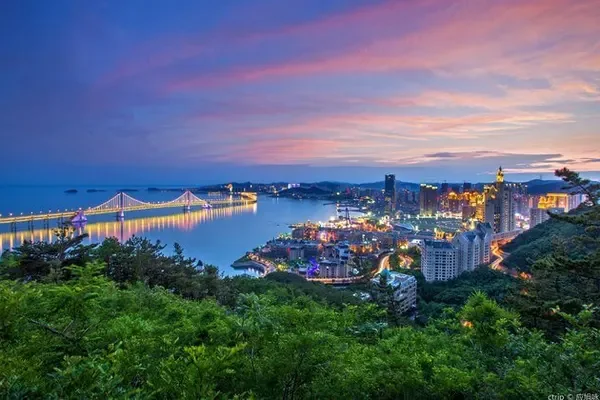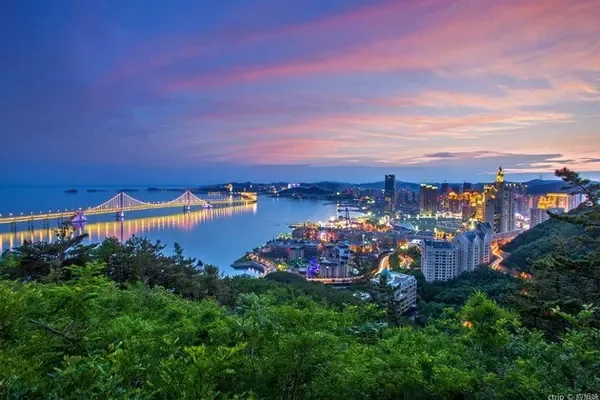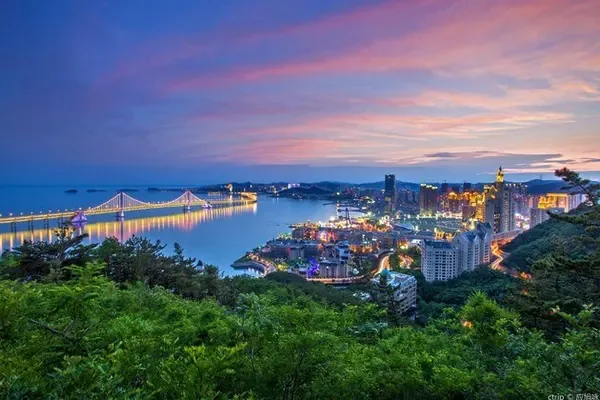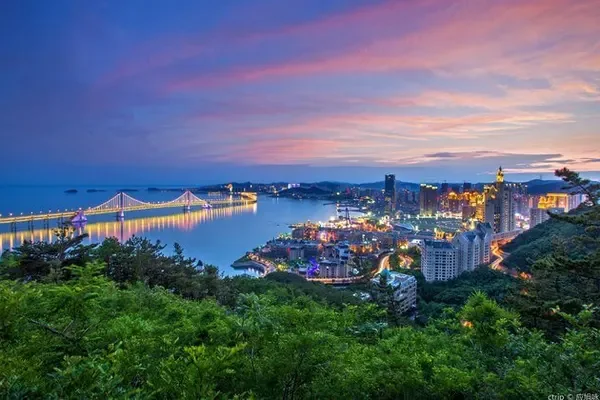The photos in this article are all taken by the author of "Black and White Touch", all rights reserved, and unauthorized use is strictly prohibited!
As mentioned in the previous article, there are four rivers originating from Mount Kailash in the Ngari region. There are many mother rivers that feed many countries in Asia. One of them is called Shiquan River, which is the upper source of the Indus River.
Shiquanhe is also the name of a town, which is located in the north of Gar County in Ngari Prefecture and is the capital of Ngari. Going further north through Ritu County, crossing a few Dabans, you will reach the boundary of Xinjiang. Shiquan River is the last stop I stay in Tibet.
Like many cities in Tibet, Shiquanhe Town is a town surrounded by mountains. The difference is that the Shiquan River passes through the city, bringing some gentleness and agility to the plateau mountain city.
Today, both sides of the Shiquan River have been turned into landscape corridors, equipped with landscape lights and Tibetan-style retaining walls. The lights are brilliant at night, and the daytime is quiet and serene. Walking along the river is pleasant and beautiful. There are exhibitions introducing the history and culture of Ali on the corridor. , while enjoying the beautiful scenery, it is equivalent to turning around an open-air Ali "museum".
Ngari area is the area with the highest altitude and the smallest population density on the earth. It is called "the roof of the world" and "the forbidden zone of life". There are only 118,000 people living on the planet. Ngari gathers mountain ranges such as the Himalayas, Gangdise Mountains, and Karakorum Mountains. It is the source of major rivers such as the Indus River, Ganges River, Sutlej River, and Yarlung Zangbo River. source of".
"Ali" means "dependence", "territory" and so on in Tibetan. About 20,000 years ago, humans had been active in Ali. In 1500 BC, the Zhang Zhung Kingdom was established here. In the 13th century, the Aliguge Dynasty surrendered to the Yuan Dynasty along with Tibet, and belonged to the "Us Zang Na Lisu Gulusun" established by the Yuan Dynasty. The Ming and Qing dynasties followed the old system of the Yuan Dynasty. After the fifth Dalai Lama established the Ganden Phodrang regime, with the support of the Qing government, the Ngari area gradually belonged to the Kaxag local government of Tibet.
The Zhang Zhung culture originated in Ali is the fundamental culture of Tibet. The Zhang Zhung Kingdom was established between 1500 BC and the first year of AD, and died in the Tubo Dynasty in 645 AD. During the heyday of the Zhang Zhung civilization, it was the cross hub and transportation fortress of the ancient Silk Road. It spanned the entire Qinghai-Tibet Plateau, covered parts of Central Asia and South Asia, and integrated many civilizations of the Central Plains, Central Asia, South Asia and West Asia. The ancient Zhang Zhung master Xin Rao Miwo first created the Zhang Zhung script, founded the Bon religion, and taught the five Ming disciplines including Gongqiao Ming, sound theory, medicine, outer Ming and inner Ming. Development has profound implications. In the 7th century AD, Indian Buddhism was introduced to Tubo, where it merged with the Bon religion and eventually formed the current Tibetan Buddhism.
Another well-known civilization in the history of the Ngari region is the Guge Dynasty introduced above. It was established in the ninth century after the collapse of the Tubo Dynasty, and had 16 hereditary kings. In the middle of the 17th century, civil strife broke out in the Guge Dynasty. The king's brother invited the Ladakh army to attack the palace, and the Guge Dynasty was overthrown. After the collapse of the Guge Dynasty, it was incorporated into Ladakh (now the Kashmir region) for a period of time, and was later taken back by the Tibetan local government headed by the Dalai Lama.
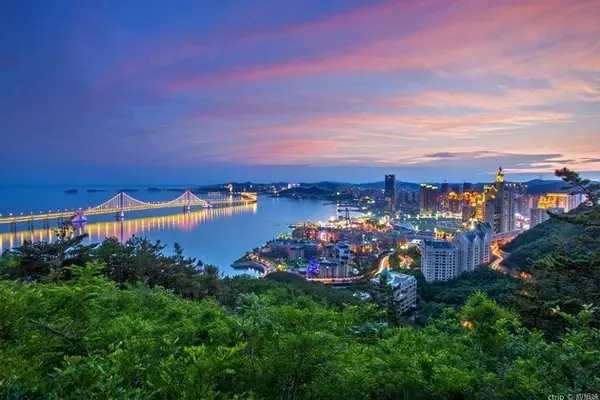
After learning about Ali culture, Hepan went to the certificate processing hall to get a border defense permit for Xinjiang, drove northward, crossed the Lamelada Ban at an altitude of 5191 meters, and came to Ritu County.

The landforms in Ngari area are diverse, including high mountains, valleys, soil forests, ice erosion, alluvial fans, moraine, volcanoes and other types. The "Japanese land" surrounded by lakes is called "Ali Sanwei". The first two circles have been shown in the previous article. Next, let's take a look at the lakes surrounding Ritu.
The first thing I saw was Pangong Lake.

Bangong Lake, also known as "Cuomu Angren Hongbo", which means "long-necked swan" in Tibetan, is located about 12 kilometers northwest of Ritu County, bordering Kashmir, and is shared by China and India. In the lake is the bird island with the highest altitude in the world, with beautiful scenery, and lake gulls often gather along the lakeside.
The most peculiar thing about Pangong Lake is that it is a lake with different salinity in the water from east to west. The eastern part of our country is a freshwater lake, and the western part of Indian-administered Kashmir is a saltwater lake.
Does the mountain in the distance of the lakeside road in the picture below look like a whale swallowing the sea? Tunnels are like eyes.

Leaving Pangong Lake and continuing northward, we encountered several unknown lakes, but all of them were stunningly beautiful lakes. Ali, who is known as "one step at a time, one step at a time", really has two brushes.

Go forward and cross the red soil Daban at an altitude of 5,380 meters, the Songxi Daban at an altitude of 5,248 meters, and the Jieshan Daban at an altitude of 5,347 meters, and finally drive out of the border of Tibet and reach the border of Xinjiang. The road sign reads "Secret Land in Western Tibet, Ali in Heaven, welcome to come again", and if you come again, you may take the Great Northern Line of Ali and visit Qiangtang No Man's Land.
The enthusiastic farewell did not bring the ease of staged "victory", because it is about to set foot on the no-man's land of more than 400 kilometers on the Xinjiang-Tibet line.
Not long after I entered Xinjiang, I encountered another lake outside the checkpoint——Spring Lake. It looked calm, blue and clear, and quite beautiful, but its other name would give people a chill—"Dead Man's Ditch" .

On the outer wall of the checkpoint, it is written "challenge the dead man's ditch, only my spring water lake". The reason why it is called "Dead Man's Valley" is because the altitude here is extremely high, and the oxygen content in the air is less than half of that at sea level; There is no summer, only winter and "about winter". The natural environment is so harsh, not to mention people, wild animals are rare. Therefore, there is a saying on the Xinjiang-Tibet line: "Jieshan Daban urinated, and the dead man's ditch slept through. "It means that a person has extraordinary courage and rich experience.

Spring Lake is the boundary lake between Tibet and Xinjiang, and it is also a watershed between the two cultures. This can be clearly felt from the simple decoration of the front and rear checkpoints and the appearance and language of the staff. The skin is also dark, but the facial features transition from flat To three-dimensional; the same mandarin with strong local characteristics, one side is the butter tea-flavored Zangpu, and the other is the mutton kebab-flavored Xinpu......
From here to Dahongliutan in Hotan, Xinjiang, it is a real no-man’s land. There are no gas stations on the road for hundreds of kilometers, and there are occasionally abandoned car wrecks on the roadside. I heard that if the car breaks down on this road, you have to give up. property, pray that a passing car can save your life.
On both sides of the road are boundless wilderness, and the undisturbed place is the paradise of Tibetan antelope.

After crossing several Daban roads, the road surface became more bumpy, full of potholes and bulges, and the visibility was poor when driving at night. If you drive a little faster, it is easy to be bumped into the air, so I had to walk slowly. When I arrived at Dahongliutan, it was almost midnight.

Hours of driving on the highlands are exhausting, hungry and thirsty. This bowl of glutinous rice noodles in the hotel restaurant is the most delicious bowl of glutinous rice noodles I have ever eaten in my life!
Overnight in Dahongliutan, the next day is another full day of plateau driving, passing through 30 miles of barracks, Kangxiwa Daban, Selyak Daban and other places, and shuttles between Kunlun Mountains and Karakorum Mountains. 500 kilometers, came to Yecheng.

The mountain road was more bumpy and difficult than the previous day, and there were often traffic jams. Either the road was being repaired, or there was a military exercise. The summer daytime in southern Xinjiang was extremely hot. This road really tested one's will.

The picture below was taken in Kangxiwa Daban. "Kangxiwa" means "a place with mines" in Uygur language. It is 4296 meters above sea level. It is located in the north of the intersection of Kunlun Mountain and Karakorum Mountain. It is a place sandwiched in mountains the vast Gobi Desert.
The picture below is the winding mountain road in Selyak Daban. Sailiak Daban is also called Mazha Daban, and "Mazha" means "grave" in Uighur. The pass here is 4969 meters above sea level. It is the longest Daban on the Xinjiang-Tibet Line. The up and down slopes are nearly 40 kilometers long. The mountains are high and steep, the air is thin, and there is no grass.
It was nine o'clock in the afternoon when we arrived in Yecheng, Xinjiang's time zone was later than that of the mainland, and it was still dark.
Yecheng is a county in the Kashgar area, also known as "Yarqiang", named after the Yarkand River in its territory. Yecheng is the starting point of the Xinzang Line. The Xinzang Line is also called the Yezi Line, which is from Yecheng to Lazi in Shigatse. After completing the journey, you can receive a "warrior certificate" at the Sitia Lost City Scenic Area.

The Lost City of Sitia is located in Sitia Valley, 11 kilometers east of Yecheng County. "Sitia" is translated into Chinese as "the indestructible cliff". Khan City was destroyed during Genghis Khan's expedition in 1218.

The ancient city of Sitia was discovered by archaeologist Huang Wenbi in the late 1920s. At present, it can only be speculated that the ancient city is a site of the Tang and Song Dynasties. The exact age has yet to be verified, so it is also called the Lost City of Sitia.
Nowadays, the ancient city scenic area has various antique adobe architectural landscapes and miniature landscapes of ancient countries in the Western Regions, including Cheshi, Ruoqiang, Khotan, Shule, Qiuci, etc., from which you can roughly appreciate the style and features of the ancient countries in the Western Regions.

Yecheng went northward for more than 200 kilometers to Kashgar City, and drove from the hot noon to the cool evening. After going through the cold and heat of the Gobi, I realized why the Islamic people in the desert worship the crescent moon (there are crescent moons on the onion tops of palace buildings)—— It is too hot during the day, and only after the moon comes out, people can enjoy a rare moment of coolness.

After several days of long-distance trek, exhausted by boats and vehicles, at night in a tavern in Kashgar, drinking some wine and listening to an exotic Uighur love song, the body and mind were relaxed.
Known as "Shule" in ancient times, Kashgar is the traffic hub of the ancient Silk Road and an international commercial port where Chinese and foreign businessmen gather. It is also the only national historical and cultural city in Xinjiang. Xinjiang tourism is a city not to be missed.

The most representative of the ancient culture of Kashgar is the ancient city of Kashgar. The ancient city is located in the center of Kashgar. It is composed of criss-crossing old streets and alleys. The maze-like city block is the most famous, and the local saying goes: "If you don't go to Kashgar, you don't go to Xinjiang, and if you don't go to the ancient city, you don't go to Kashgar."
(There is a Kaesong song and dance performance every morning outside the ancient city gate)

The ancient city has a history of more than 2,100 years, with splendid culture and unique customs. It is the meeting point of three major religions and four major civilizations. ", the reputation of "the hometown of beautiful women", where you can visit hundreds of alleys, visit hundreds of markets, see all kinds of businesses, search for all kinds of treasures, taste all kinds of food, and enter all kinds of courtyards...

(Hometown of Beauty)

(Walk around hundreds of cities)
(see Baiye)

(You Baixiang)
The next little girl who is an actress wants to single out a few words. At the beginning, she taught her younger brother at the door. When she saw that I was filming them, she let him enter the room, and then used a skill to kill with eyes (the upper right of the picture below), then The little expression of pretending to be angry was not too good, and she signaled me "you can't take pictures", and I said "you look so beautiful", she immediately put on a lady's pose, which means "then make me look better in pictures!" It's so cute.
Across the street from the ancient city is the Id Kah Mosque, which was first built in 1468. It consists of a main hall, scripture hall, courtyard, minarets and gates. It is about 140 meters long from north to south and 120 meters wide from east to west. It is the largest mosque in the country. One of the mosques.
The buildings in the temple have a strong national style and religious color, and are a model of Uyghur ancient architectural art. In ancient times, the temple was also an important institution for spreading Islamic culture and cultivating talents. It has trained many Islamic clerics and scholars, including some influential poets, writers, historians and translators, and has a certain influence in the religious circles at home and abroad. , is now one of Kashgar's landmarks.
Another unmissable attraction in Kashgar is the Fragrant Concubine Garden.
Concubine Xiang, the concubine of Qianlong who exudes fragrance and "attracts bees and butterflies" in "Han Zhu Ge Ge", did exist in history, and her hometown is located in Kashgar, Xinjiang. After the death of Concubine Xiang, her sister-in-law Su Dexiang escorted the body back to Kashgar and buried it in the Apahoga family tomb in the eastern suburbs of Kashgar. Today's Concubine Xiangyuan is a scenic spot built around the tomb of Concubine Xiang.
As soon as you enter the scenic spot, you can see a stone with the characters "Xiangfeiyuan". This stone is not just a sign, but a Xiangfei stone collected from Tianshan Mountain. The top of the front end of the stone is 1.734 meters high, which coincides with the birth time of Xiangfei in 1734; the height of the middle top is 1.788 meters, which coincides with the time of Xiangfei's death in 1788; . Moreover, the outline of the top of the stone looks like a reclining girl, hence the name Xiangfei Stone.
The Apahoja tomb is the family cemetery of Concubine Xiang. It consists of five parts: the gatehouse, the large and small mosques, the scripture hall and the main tomb. It is a huge brick round tower with a delicate cylindrical Bunker Building on the top of the tower, holding a crescent moon high. The blue tiles look extraordinarily magnificent and solemn.
There is a pool of clear water outside the temple, towering trees, quiet and pleasant. This pool is called Mirror Pool. Kashgar is located in an oasis on the edge of the desert. The Uighurs here cherish the water source very much. Xiangfei often uses water as a mirror to make up her makeup. To commemorate Xiangfei, people build a rectangular pool in front of the tomb, which is called Mirror Pool. .
Around Xiangfei's tomb, there are also buildings such as Xiangfei's hometown, high and low mosques, Jiaman mosque, gate tower, etc., which are very ancient Uyghur style.
The picture below shows the high and low mosques, the high mosque is for worship in summer, and the low mosque is for worship in winter. Its architectural style is unique and gorgeously decorated. The wooden pillars in the temple are exquisitely carved, and there are caisson-style ceiling paintings, plaster carvings and brick carvings on the walls. The combination of patterns is changeable, and the color matching is harmonious and unified.
There are also imitation scenes in the scenic area, which show the legendary story of Concubine Xiang from birth to death, from Kashgar to Beijing, from Princess Xiangxiang to being loved by thousands of people. , "Uyghur Marriage Customs" and other live performances, and learned a lot about Xiangfei's life and Uyghur customs in the wonderful programs, which benefited a lot.
In addition to the above-mentioned famous attractions, the streets and alleys of Kashgar are also worth visiting. The exotic faces, ancient high-rise houses, and the lively Kashgar Grand Bazaar...all give people a novel experience.
The more novel experience lies in Taxkorgan, where we will go to Taxkorgan tomorrow. We will once again encounter the Snow Mountain God Lake, Glacier Waterfall, Twelve Muqam and the terrifying Tasha Ancient Trail.
Next stop - the Pamirs.
